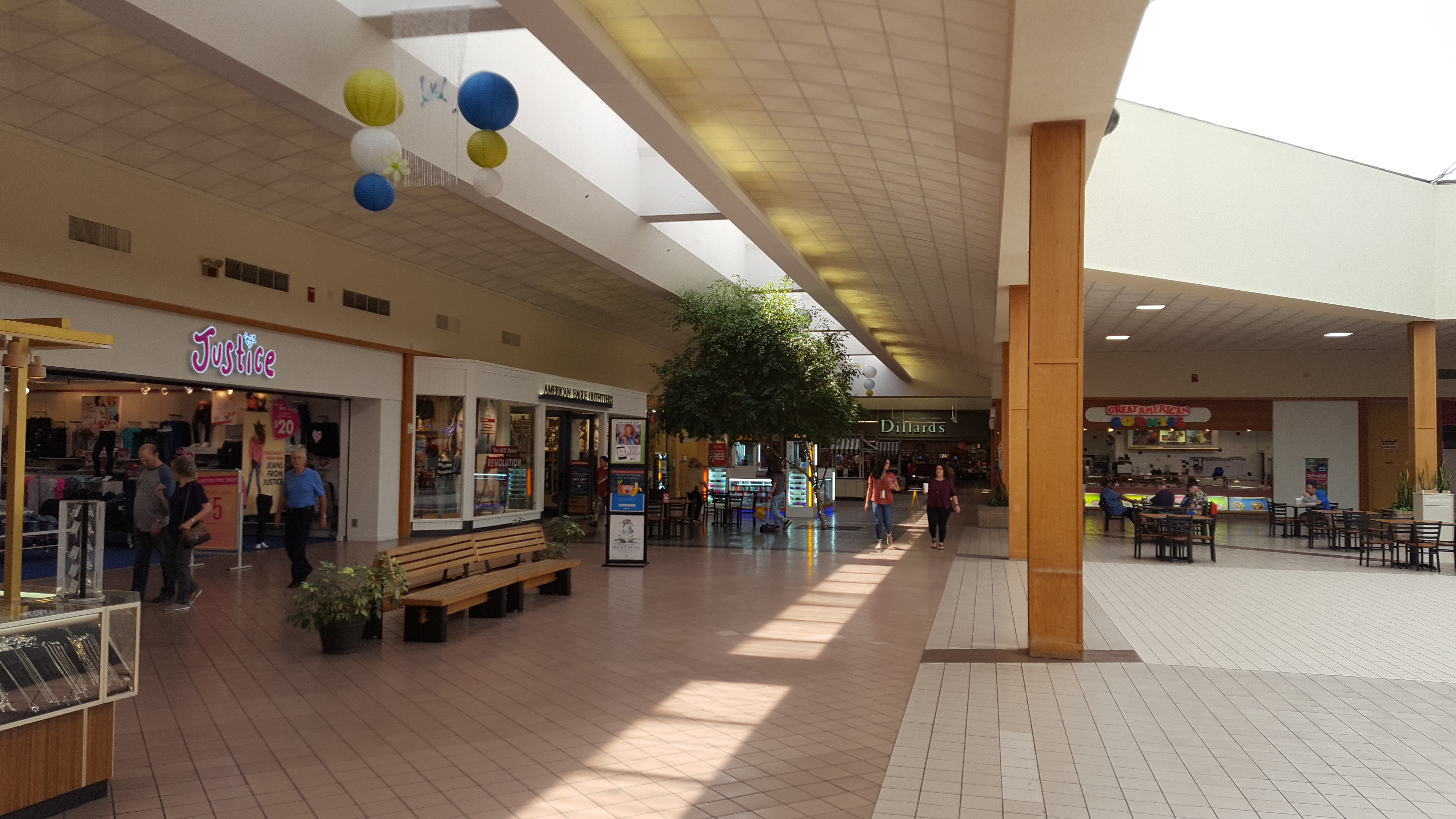
What’s in the Future for Arrowhead Mall?
Next week, on February 1st, 26 students studying landscape architecture, architecture, and interior design will descend on Downtown Muskogee. They are the participants of a unique design competition to explore scenarios for re-inventing Arrowhead Mall and connecting it to the downtown core. Divided into four teams they will be roaming around downtown talking to city officials, shopkeepers, and mall management to learn about the current role of the mall and the part it will play in the future life of the city. They will take what they learn back to their studios to generate four unique scenarios that explore alternative architectural configurations, different functions and program elements, new uses for the parking lots and outparcels, changes to landscape or streetscape, connections to downtown and the surrounding neighborhoods, lighting strategies, and so much more!
It is no secret the mall is struggling. Some have questioned the purpose of trying to right a sinking ship. There have been objections made to spending money on the effort. I would like to address some of these questions and offer some reasons why citizens and their leaders should be thinking about the mall’s future. So here is a little dialogue to consider.
Isn’t the enclosed mall an obsolete shopping concept for the Twenty-First Century?
It is true that malls have been closing all over the country due to competition from discount retailers and online shopping. But when the mall closes, the building remains. Some have been demolished, but many have been adapted to become civic centers, incubators for local business, data centers, warehouses / fulfllment centers or office complexes. For instance, Eastgate Mall in Tulsa has been converted into offices for tenants like Coca-Cola and the Alorica Call Center. Over 4,000 people now work at that former mall.
Won’t this competition just benefit the mall owners?
While the mall owners stand to benefit, the mall is much more than one single business. It is a collection of many shops, some national chains and some mom and pop operators. Furthermore, the mall is a public space and social hub for the city. The bus system converges at the mall. It hosts events, like mall walking, arts and craft shows, and annual visits from Santa. A more robust mall can benefit many individuals: workers, shoppers, citizens, and property owners alike.
What if the mall closes?
The closing of the mall would have a significant impact on downtown and the city as a whole. The mall pays a significant amount of sales taxes, the loss of which would adversely impact the city’s budget. It also pays property tax, the loss of which would affect local schools and county revenues. The mall would also leave a large vacant site and abandoned building that might become an attractive nuisance and be a burden on the city to care for. We should be looking for ways to avoid this outcome. It is a community problem, not just one for the mall owners to solve.
We don’t want the city taking over the mall?
Neither do we, that is not the vision for the design competition. However, if the mall were to be abandoned that that could become a distinct possibility, either by necessity or by conditions of default. While we do not wish to see the city take over the mall, there are still opportunities worth exploring. What if part of the mall could be used as a new civic center with space for city offices, a post office, or a library branch? All the current structures housing these functions are aging. Some are functionally obsolete. They need renovation and updating. The mall space could be used temporarily during renovations or permanently, allowing the old buildings to be adapted for new uses.
Shouldn’t we focus on the downtown in its entirety?
We are focusing on the entire downtown. The design competition is part of a comprehensive downtown planning effort that includes increasing the amount of activity downtown, saving historic buildings, introducing green space, and improving streets, sidewalks, and other connections. The competition itself has major criteria for integrating the mall into downtown and developing neighboring properties.
Why should we spend money on a design competition?
The cost of the competition is largely covered by the grant from Muskogee Main Street that is paying for the downtown planning effort. It is true we have been asking for funds from the community to raise a prize for the winning design team. The mall management has pledged to this fund, as have businesses and private individuals. All of the funds raised will go directly to the students to further their education and not to the planning team, the mall, or the city. Many of the students are from Oklahoma and will become the state’s future architects, landscape architects, and interior designers. Investing in them now will give us a wealth of creative ideas for the mall and a future generation of entrepreneurs. Entrepreneurs like Cindy Littrell, a recent graduate of the OU College of Architecture and the proprietor of Club Lunch.
This discussion might not persuade everyone that the mall is a high priority, but I hope it at least brings some clarity to the purpose of the design competition. Whether you agree or disagree, I hope If you see some students on Broadway or Main Street next Wednesday you will take the time to greet them, encourage them, and give them your opinion. And be sure to join us at the mall on March 1st from 1:00 pm to 5:00 pm for an exhibit of their work.
